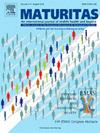Optimizing the regenerative potential of vaginal fibroblasts: The role of autologous platelet-rich plasma and hyaluronic acid in vitro
IF 3.9
2区 医学
Q2 GERIATRICS & GERONTOLOGY
引用次数: 0
Abstract
Objective
Many postmenopausal women suffering from vulvovaginal atrophy are looking for non-hormonal treatments. Platelet-rich plasma (PRP) therapy has emerged as a novel and promising approach for gynecological applications. PRP is an autologous blood product rich in growth factors used to stimulate tissue regeneration. On the other hand, hyaluronic acid (HA) is used as a treatment for vaginal dryness as it improves tissue hydration thanks to its strong capacity to retain water. This study examines the in vitro effects of PRP alone or combined with HA on vaginal fibroblasts (VFs) isolated from mucosal samples of postmenopausal women undergoing surgery for vaginal prolapse.
Methodology
Vaginal and blood samples were collected from postmenopausal women undergoing pelvic organ prolapse surgery. PRP was prepared alone or combined with HA (PRP-HA) from peripheral blood. Vaginal fibroblasts were isolated via enzymatic dissociation and cultured in 2D and 3D (spheroids) systems. Biological activities were assessed by measuring cell growth, proliferation, senescence, metabolic activity, and collagen accumulation, along with immunocytochemistry for (myo-)fibroblast markers.
Results
VFs cultured with PRP or PRP-HA showed dose-dependent higher proliferation compared with the control condition, with increased S and G2M cell cycle phases correlating with enhanced proliferation. Expression of vimentin, a protein that plays a key role in maintaining cellular structure and function, was stable, while alpha-SMA decreased, indicating a shift from myofibroblasts to fibroblasts. Collagen production, crucial for wound healing and tissue regeneration, increased under PRP or PRP-HA treatment. PRP and PRP-HA also prevented cell senescence in long-term low-density cultures. These findings were consistent across 2D and 3D culture systems.
Conclusions
This study provides in vitro evidence supporting the potential of PRP and PRP-HA as autologous treatments for vaginal rejuvenation.
优化阴道成纤维细胞的再生潜能:自体富血小板血浆和透明质酸在体外的作用。
目的:许多绝经后女性外阴阴道萎缩正在寻求非激素治疗。富血小板血浆(PRP)治疗已成为一种新颖而有前途的妇科应用方法。PRP是一种富含生长因子的自体血液产品,用于刺激组织再生。另一方面,透明质酸(HA)被用来治疗阴道干燥,因为它具有很强的保水能力,可以改善组织水合作用。本研究考察了PRP单独或联合HA对绝经后阴道脱垂手术妇女粘膜样本中分离的阴道成纤维细胞(VFs)的体外影响。方法:收集经盆腔器官脱垂手术的绝经后妇女的阴道和血液样本。从外周血中单独制备PRP或与HA (PRP-HA)联合制备。通过酶解分离阴道成纤维细胞,并在二维和三维(球体)系统中培养。通过测量细胞生长、增殖、衰老、代谢活性和胶原积累,以及(肌)成纤维细胞标记物的免疫细胞化学来评估生物活性。结果:与对照组相比,PRP或PRP- ha培养的VFs的增殖率呈剂量依赖性,细胞周期S和G2M期的增加与增殖增强有关。在维持细胞结构和功能中起关键作用的蛋白vimentin的表达稳定,而α - sma的表达减少,表明从肌成纤维细胞向成纤维细胞的转变。胶原蛋白的生成对伤口愈合和组织再生至关重要,在PRP或PRP- ha治疗下增加。在长期低密度培养中,PRP和PRP- ha也能防止细胞衰老。这些发现在2D和3D培养系统中是一致的。结论:本研究提供了体外证据,支持PRP和PRP- ha作为阴道年轻化的自体治疗方法的潜力。
本文章由计算机程序翻译,如有差异,请以英文原文为准。
求助全文
约1分钟内获得全文
求助全文
来源期刊

Maturitas
医学-妇产科学
CiteScore
9.10
自引率
2.00%
发文量
142
审稿时长
40 days
期刊介绍:
Maturitas is an international multidisciplinary peer reviewed scientific journal of midlife health and beyond publishing original research, reviews, consensus statements and guidelines, and mini-reviews. The journal provides a forum for all aspects of postreproductive health in both genders ranging from basic science to health and social care.
Topic areas include:• Aging• Alternative and Complementary medicines• Arthritis and Bone Health• Cancer• Cardiovascular Health• Cognitive and Physical Functioning• Epidemiology, health and social care• Gynecology/ Reproductive Endocrinology• Nutrition/ Obesity Diabetes/ Metabolic Syndrome• Menopause, Ovarian Aging• Mental Health• Pharmacology• Sexuality• Quality of Life
 求助内容:
求助内容: 应助结果提醒方式:
应助结果提醒方式:


